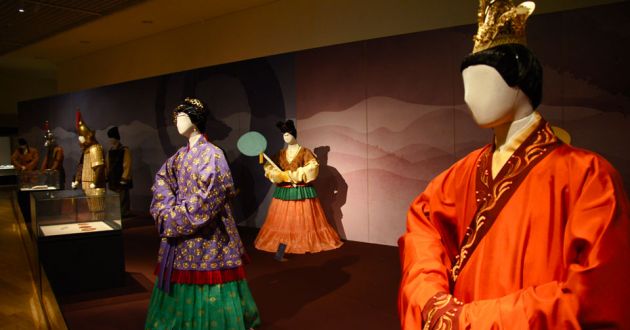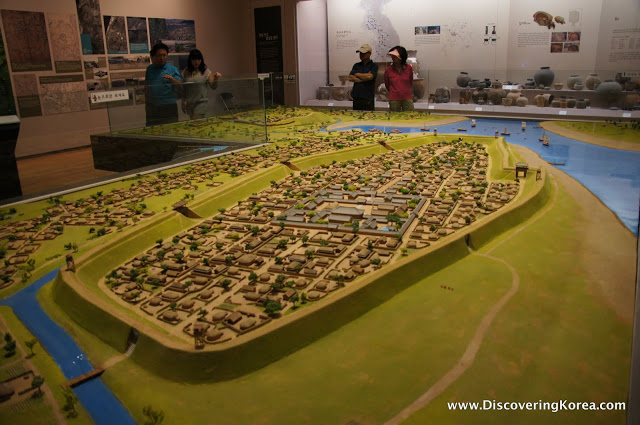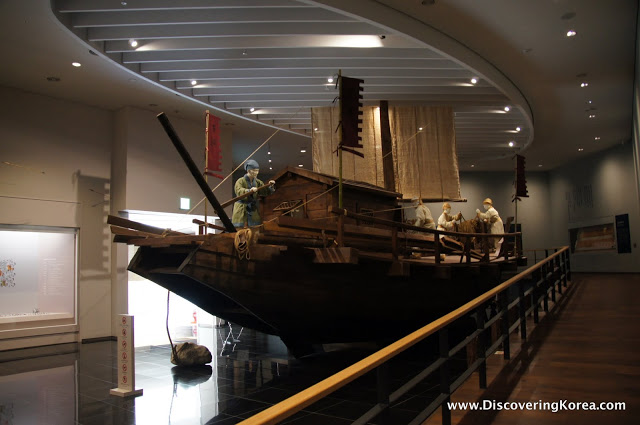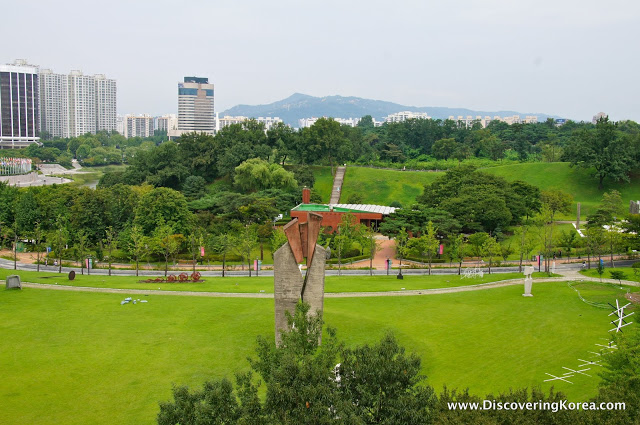One of Seoul’s newest museums looks into an overlooked aspect of Korea’s long history. The Seoul Baekje Museum (서울백제박물관), which is located on the grounds of Seoul Olympic Park (서울올림팍공원), chronicles the first kingdom to make the Seoul area a Korean capital.

This fact is why you may have heard that Seoul can claim a 2,000-year history as a world capital.
The civilization that started it all was Baekje, a kingdom that reigned from 18 BCE to the mid 7th century.
Among historians of ancient Korea’s Three Kingdoms Period, Baekje is regarded as a regional trading power, with its southwestern location seemingly ideal for forays to China and Japan, until it was ultimately defeated by neighboring Silla in 660.

From its establishment until the year 475, Wiryeseong (위례성) was its early capital. Located in what’s now Songpa-gu district of southeastern Seoul, the remains of two earthen fortresses in the area are thought to be the remains of the capital.
Beyond the Seoul Baekje Museum’s attractive layout and huge lobby area filled with natural light, history buffs will enjoy the museum’s three major exhibition halls.
The first introduces some of the dominant aspects of the prehistoric era in what is now Seoul. It also shows Baekje’s emergence as an independent power from its origins in the Mahan confederacy.

It was certainly a tumultuous time on the Korean Peninsula, and the exhibits depict the many competing peoples.
In the Seoul Baekje Museum‘sExhibition Hall 2, visitors are treated to a detailed look at Hanseong, the capital of Baekje.
Artifacts, replicas and videos help to describe Baekje’s unique culture. What’s also helpful an interesting is a recreated model of the capital city, an island set in the midst of the Hangang river (한강), surrounded by a tall earthen fortress and connected to the mainland by a series of gates and bridges.
Taken as a whole, it helps confirm why Baekje was regarded as an ancient maritime power.

And finally, the Seoul Baekje Museum‘s Exhibition Hall 3 looks into one of the greatest rivalries in ancient Korea. Baekje, Silla and Goguryeo are known today as the Three Kingdoms.
Over the centuries, these three distinct kingdoms engaged in war, peace and trade with each other. Perhaps fittingly, modern-day Seoul was territory that each kingdom sought.
Eventually, Baekje lost this hallowed ground in the late 5th century and was forced to relocate its capital southward to Gongju and Buyeo.

Although most of the Seoul Baekje Museum‘s extensive signage is only available in Korean, each exhibit features some limited English explanation.
Furthermore, the attractive visuals and presentation of each exhibit helps non-Korean speakers to understand the Baekje Kingdom’s remarkable culture and history.
If all those exhibitions leave you hungry, the Seoul Baekje Museum also includes a second floor restaurant.

Called L’Arianna, the surprisingly large space serves several kinds of pasta, as well as steak and fried rice amongst a curious mix of paintings and ceiling fixtures. Most importantly, the food is good, and there’s a not-too-shabby wine list, to boot!
Before you depart the restaurant and Seoul Baekje Museum, be sure to venture up to the top level, which affords a very nice view of Seoul Olympic Park.
Fittingly, this includes the huge Mongchontoseong earthen fortress, a recreated berm from Baekje’s former capital city.
For Your Information..
| Open: | 09:00-21:00 (Tue-Fri), 09:00-19:00 (Sat-Sun), Closed Mondays |
| Price: | Free (special exhibitions may charge) |
| Address: | Seoul Songpa-gu Bangi-dong 88-20 |
| Directions: | Mongchontoseong Station (#813) on Line 8, Exit 1 |
| Phone: | 02-6361-3107~9 |
| Website: | Official Website |
About Matt Kelley
Matt Kelly is native of the US Pacific Northwest and is half-Korean by ethnicity. He lived in Korea for five years and has written hundreds of travel guides for Wallpaper, TimeOut, the Boston Globe and Seoul Magazine and was a host for several different variety shows on Korean radio and television.
